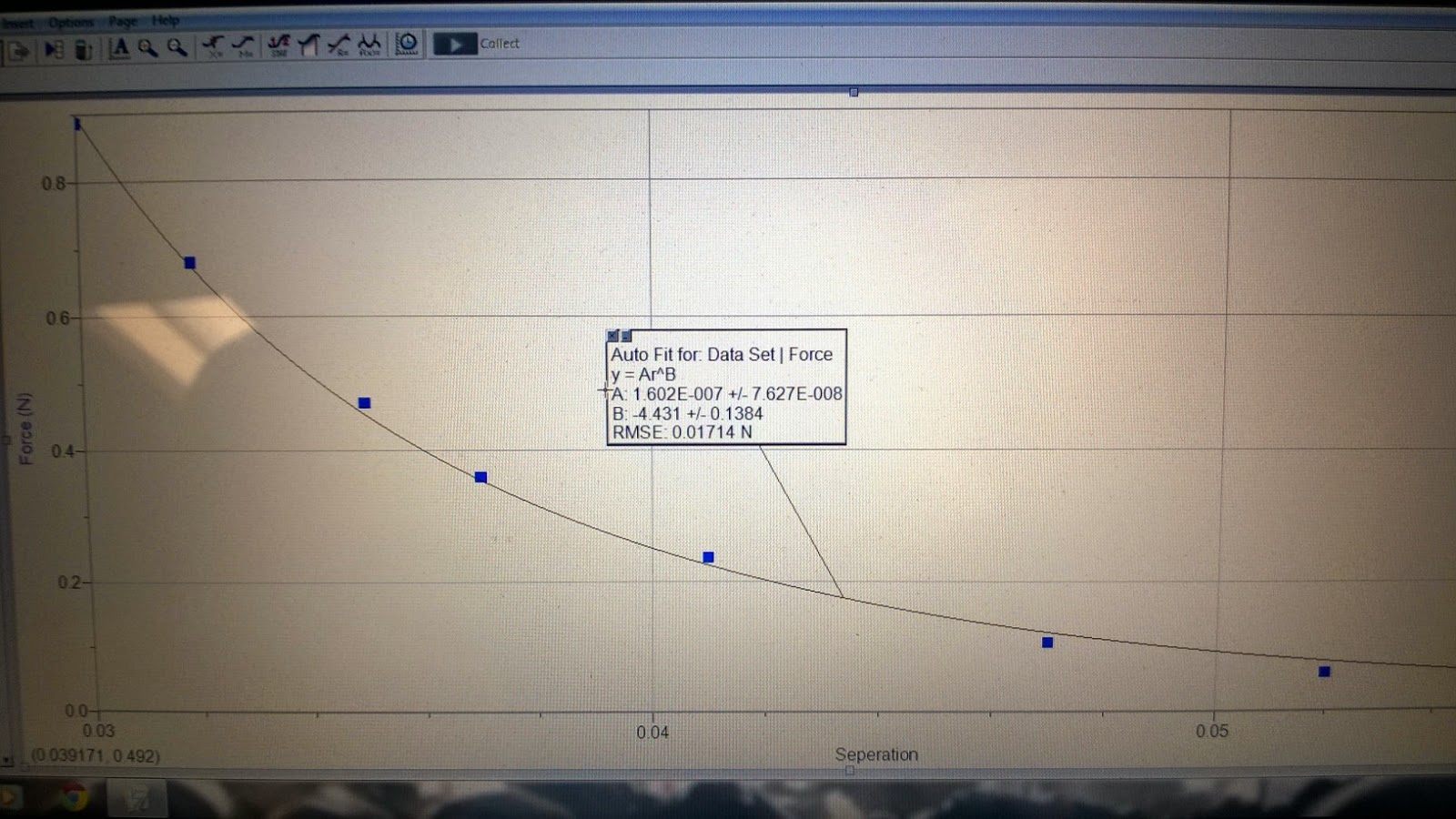The purpose of this lab is to find some kind of energy relation from a magnet which does not fit hooks law for potential and kinetic energy. To do this we will have to measure the force vs distance to find the work and then get an equation to test if energy is conserved.
Experiment:
The experiment was setup with a slider which is on an air table to create a frictionless surface for it to move on. One of the problems was making sure the table was level enough so the slider wouldn't stop because of the slope of the table. After we had the table at a reasonable level we tested the slider by pushing it into the side of the table with the magnet which would repel the magnet on the glider back to its original starting point. Here is a picture of the setup:
Next we put the air table on a slope so the glider would slide into the magnet and we calculated the angle of the slope. Then we would measure the separation distance from the magnet. Now with the weight of the glider and the angle we could find the force with equation:
mgh * cos(x) = ma = Force *x is the angle
Here is the table at the angle:
We did this five more times increasing the angle and measure the angle and distance so would could graph the force vs the distance. With this graph we put a non linear fit for the computer to find the values of A and B so we could create an equation for the relationship of the magnets energy.
Now we took the information from the force vs distance graph and derived out formula which we will use to calculate the energy of the magnet.
Next we leveled our table and pushed the glider into the magnet again but this time measure with our motion sensor so we can measure velocity, position, and time.
We setup up another graph to graph potential energy, kinetic energy and total energy. Where potential energy is from the magnet.
Here is our final graph:
The final graph show the kinetic energy in purple is conserved with the potential energy of the magnet.





No comments:
Post a Comment